The following grapes represent the most prominent grape varietals of Turkey used in winemaking. There are over 4000 grape varietals native to Turkey. The Okuzgozu grape is the first domesticated grape used for wine making.
“It turned out to be southeastern Anatolia,” the Asian part of modern Turkey, said Jose Vouillamoz, speaking at the EWBC wine conference in the Turkish city of Izmir. “We propose the hypothesis that it is most likely the first place of grape vine domestication.”
Patrick McGovern’s lab also provided archaeological evidence of wine’s Anatolian roots after analysing residues of liquid recovered from vessels thousands of years old.
Preliminary evidence from pottery and even older containers, seems to place the very first domestication of the wild Eurasian grape Vitis Vinifera in southeastern Anatolia sometime between 5,000 and 8,500 BC, McGovern said.
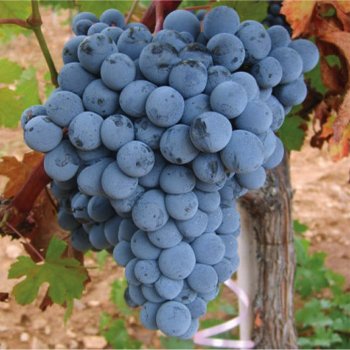 ÖKÜZGÖZÜ (Pronunciation: Oh-cooz-goe-zue) Native to Eastern Anatolia, Öküzgözü derives its name from large dark berries that resemble a “bull’s eye”.
ÖKÜZGÖZÜ (Pronunciation: Oh-cooz-goe-zue) Native to Eastern Anatolia, Öküzgözü derives its name from large dark berries that resemble a “bull’s eye”.
- ORIGIN (Sub Region)
: Eastern Anatolia (Elazığ)
- COLOR: Light ruby red similar to Pinot Noir.
- PALATE: Medium body, red fruit dominant delicate bouquet, medium tannins, high acidity.
- STYLES: Usually blended with Boğazkere.
Climate
- Cold winters and hot dry summers.
- The vineyards at Elazığ are 850-1100 meters high.
- Keban and Karakaya dams on the Euphrates initiated a climate change in the region, rendering harsh winters and dry hot summers mellower.
Soil
- Red clay and decomposed granites.
- Light chalky clay soils to sandy clay with underlying limestone.
Berry
- Large, round, black and fleshy berries.
- Ripens in the second half of September.
Aroma Profile
- Raspberry, Dark cherry, Sour Cherry, Pomegranate, Ripe Plum
- Clove, Cardamom, Chocolate, Eucalyptus, Mint
Pairings
Casseroles, Kebabs, Smoked Meats, Eggplant, Grilled Red Meats
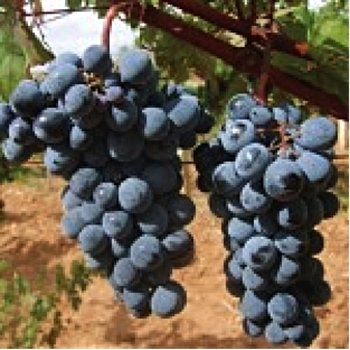 BOĞAZKERE (Pronunciation: Bow-aahz-keh-reh) Boğazkere is the most tannic grape of Turkey and literally translates to “Throat Scratcher”.
BOĞAZKERE (Pronunciation: Bow-aahz-keh-reh) Boğazkere is the most tannic grape of Turkey and literally translates to “Throat Scratcher”.
- ORIGIN (Sub Region)
: Southeastern Anatolia (Diyarbakır)
- COLOR: Dark ruby to purple.
- PALATE: Full-body, high dense tannins, medium acidity, similar to Tannat, dark berries.
- STYLES: It is usually blended with other grapes, mainly Öküzgözü.
Climate
The grape prefers hot and dry climates and relatively higher altitudes. It is quite resistant to drought.
Soil
Decomposed sandstone to red clays
Berry
- Dark blue / black in color, small to medium-sized round berries with thick skin.
- Late ripening (mid October).
Aroma Profile
- Black Cherry, Raspberry, Blackberry, Black Mulberry
- Pepper, Clove, Eucalyptus, Tobacco, Leather, Pine Forest, Dark Chocolate, Licorice
Pairings
Spicy meat dishes, kebabs and BBQs, slow roasted lamb, intense cheeses
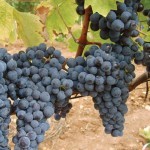 KALECİK KARASI Pronunciation: Kah-le-djic-car-ah-ser
(with ‘er’ as in British ‘father’) Kalecik Karası means the “black from Kalecik”. Kalecik is a small village (65 km northeast of Ankara) in Central Anatolia with its castle.
KALECİK KARASI Pronunciation: Kah-le-djic-car-ah-ser
(with ‘er’ as in British ‘father’) Kalecik Karası means the “black from Kalecik”. Kalecik is a small village (65 km northeast of Ankara) in Central Anatolia with its castle.
- ORIGIN (Sub Region)
: Central Anatolia (Ankara/Kalecik)
- COLOR: Ruby red.
- PALATE: Medium body, low tannins, lively acidity, cotton candy aroma, dominated by red fruits.
- STYLES: Usually made into single varietal wines.
Climate
- Mainly grown in the Kızılırmak River Valley.
- Kızılırmak River creates a special microclimate in the Kalecik area, making it milder in the winter compared to the nearby Ankara with hot dry summers and cold snowy winters.
Soil
Pebbly clay loam
Berry
- Blue-black colored, medium-sized, round berries with thick skins.
- Ripens around second half of September.
Aroma Profile
- Red Berries, Cherry, Strawberry, Raspberry, Cotton Candy
- Game
Pairings
Pizza, Meats Cooked in a Tomato Sauce, Grilled Cutlet, Pasta with Tomato Sauce.
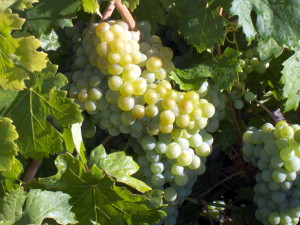
EMİR Pronunciation: Eh-mere Emir is a native white grape of Cappadocia with most plantings in the Nevşehir province. It was used since the Roman times to make crisp, refreshing wines. It acquired its name (Emir = Ruler / Lord), from the fact that it was made into wine for the local rulers.
- ORIGIN (Sub Region)
: Central Anatolia (Nevşehir)
- COLOR: Straw-yellow with a green hue
- PALATE: Light to medium body, lively acidity, dominated by green apple, citrus, and minerality.
- STYLES: Used in sparkling and still wine making. It is not aged in oak and does not go through malolactic fermentation.
Climate
- Cappadocia has a steppe climate; there is a vast temperature difference between day and night.
Soil
Sand, sandstone, decomposed volcanic, tuffa. Emir flourishes on the volcanic soils of Cappadocia, rich in minerals.
Berry
- Emir has slightly oval, green-yellow, medium-sized berries.
- Ripens mid season.
Aroma Profile
- Apple (green/yellow), Pineapple, Kiwi, Lemon, Blood Orange, White Rose.
- Lime stone minerality
Pairings
Salmon, Shellfish, Asparagus, Pasta with Cream Sauce, Salads, and Sushi.
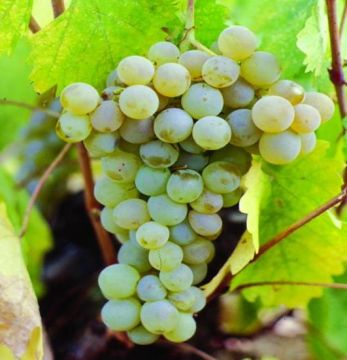
NARİNCE Pronunciation: Nah-rin-djeh Narince means “delicate” in Turkish.
- ORIGIN (Sub Region)
: Central Anatolia (Tokat)
- COLOR: Straw with a green hue
- PALATE: Round, medium to full-body, balanced with good acidity with citrus aromas.
- STYLES: Dry and semi-dry wines. Usually aged in oak. Narince has a similar flavor profile to Chardonnay and gains a complex bouquet with aging.
Climate
Grown in Tokat along the Yeşilırmak River.
It is the transition zone where the moderate Black Sea climate ends and turns into the Central Anatolian continental climate.
Soil
Riverbed and glaciated alluvial fan
Berry
- Large, oval, yellowish-green berries with a bronze discoloration.
- Harvested in the second half of September.
Aroma Profile
- Orange, Grapefruit, Lime, White Pineapple, Quince, Plumeria, Acacia, Basil, Ripe Green Apple, Walnut
Pairings
- Turkish dolmas, a dish made from the prized leaves of Narince, rolled and stuffed with a mixture of rice, flavored with olive oil, lemon and spices.
- Grilled Fish, Spicy Chicken, Eggplant Salad

SULTANİYE Pronunciation: Sool-tah-nee-yeh
ORIGIN (Sub Region)
: Aegean (Denizli, Manisa)
- COLOR: Straw with a green hue
- PALATE: Round, medium to full-body, balanced with good acidity with citrus aromas.
- STYLES: Dry and semi-dry wines. Light and easy to drink fruity and fresh wines. Mostly consumed as table grapes and raisins however it is also used in wine making.
Climate
Ranges from the Aegean region’s mild climate to harsher climates for higher altitudes.
Soil
Clay loam and calcareous chalk.
Berry
- Medium sized round
berries.
- Ripens mid season.
Aroma Profile
Asparagus, Pear, Pineapple, Floral, Mango, Lemon, Golden and Green Apples, Hay
Pairings
Grilled or Steamed Fish, Shellfish, Chicken, Pasta with White Creamy Sauces.









